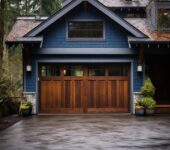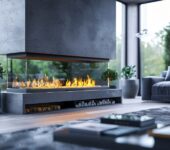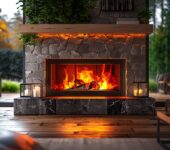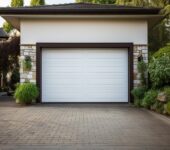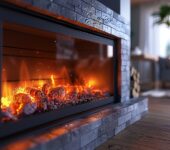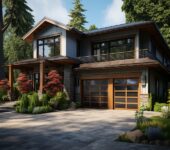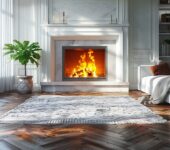Table of Contents
Are you aware of the potential dangers lurking in your fireplace? How do you know if your fireplace is safe?
It’s crucial to ensure fireplace safety to protect your home and loved ones. From signs of damage to essential safety precautions, this article covers everything you need to know to keep your fireplace in top condition.
Learn how to spot warning signs, check for safety, and take necessary precautions for a cozy and secure fireplace experience by staying tuned.
Why Is It Important To Ensure Fireplace Safety?
Ensuring fireplace safety is crucial to protect your home and loved ones from potential risks and hazards associated with improper maintenance and operation of fireplaces.
Neglecting fireplace maintenance not only increases the risk of chimney fires but can also lead to carbon monoxide poisoning. Professional inspections play a vital role in identifying any issues like creosote buildup or blockages that could pose a fire hazard.
Basic fire safety guidelines include using a screen or glass doors to prevent sparks from escaping, keeping flammable items away from the fireplace, and never leaving a fire unattended.
Regularly checking for warning signs such as strange odors, smoke inside the house, or difficulty in starting fires is essential to address any problems promptly.
Implementing safety measures like installing smoke and carbon monoxide detectors and having a fire extinguisher nearby can provide additional layers of protection.
What Are The Signs That Your Fireplace May Not Be Safe?
Identifying signs that your fireplace may not be safe is essential to prevent potential hazards and ensure the proper functioning of the heating system in your home.
Common warning signs include smoke stains on the walls or ceiling near the fireplace, which could indicate poor ventilation or a chimney blockage. Gas odors, especially when the fireplace is not in use, may point to a gas leak that requires immediate attention. Irregular flames, such as flickering or yellow flames instead of steady blue ones, could signal issues with the gas line or burner.
Regular annual inspections by certified technicians are crucial to catch any potential problems early on and ensure your fireplace is operating safely. In case of emergency, it’s important to have a plan for gas leaks or other safety concerns, including knowing how to shut off the gas supply and having proper ventilation in your home.
Damaged Chimney
A damaged chimney poses significant risks to your fireplace and home safety due to potential leaks, cracks, or blockages that can increase fire hazards and compromise proper ventilation.
Leaking chimneys can lead to water penetration, causing structural damage, mold growth, and deterioration of the chimney’s interior.
Similarly, cracks in the chimney can weaken its structure, making it vulnerable to collapse or further damage during intense heat.
Blockages, such as creosote buildup or debris, can obstruct airflow and increase the risk of carbon monoxide poisoning within the home.
Regular inspection of the chimney, both internally and externally, is crucial to identify any issues early on and prevent potential hazards.
Annual inspections by certified professionals are recommended to ensure that safety standards are met and to address any necessary repairs promptly.
Cracked Firebox
A cracked firebox can present serious fire hazards and risks to your home, requiring thorough examination and immediate safety measures to prevent potential fire containment issues.
Small cracks in a firebox can allow heat and flames to escape, potentially igniting surrounding combustible materials. To address firebox issues, it’s crucial to inspect your fireplace regularly for any signs of damage or wear. Maintaining safety protocols like ensuring proper ventilation and using appropriate fuel types can help minimize fire risks. Promptly repairing any cracks or damages in the firebox is essential to prevent a fire from spreading and causing extensive damage to your property.
Smoke In The Room
Smoke in the room when using the fireplace signals potential ventilation problems or blockages that could compromise safety standards, highlighting the importance of maintaining proper airflow and safety measures.
Inadequate ventilation can lead to smoke lingering in the room, not only causing discomfort but also posing health risks. The presence of smoke stains on walls, ceilings, and furniture serves as a visual reminder of potential hazards.
To combat these issues, it is crucial to regularly inspect and clean chimney flues, vents, and air ducts to ensure proper airflow. Installing and regularly checking smoke alarms is essential to alert occupants in case of smoke buildup, providing an early warning to evacuate and prevent potential hazards.
By prioritizing safety guidelines for ventilation systems and raising awareness about the risks associated with improper fireplace usage, households can significantly reduce the likelihood of accidents and ensure a safe and cozy environment for all occupants.
Creosote Buildup
Creosote buildup in the chimney poses a significant fire hazard due to its flammable nature, necessitating regular cleaning and maintenance to prevent potential chimney fires and ash removal challenges.
Chimney sweep services play a crucial role in the upkeep of chimneys to prevent the dangerous accumulation of creosote.
It is recommended to schedule annual inspections by certified professionals to assess the extent of creosote buildup and ensure the chimney’s safety.
When handling creosote, safety precautions like wearing protective gloves and a mask are vital to protect against its harmful effects.
Proper ash removal is also essential to maintain fire safety standards, as an excess buildup of ash can contribute to the risk of chimney fires.
Damaged Flue Liner
A damaged flue liner can compromise the venting system of your fireplace, leading to potential safety hazards such as leaks, creosote buildup, or vent blockages that require immediate attention for fire protection.
Leaking flue liners can allow water to penetrate the chimney structure, leading to damage to the masonry and potentially causing structural issues over time.
Vent blockages can hinder the proper flow of combustion gases, increasing the risk of carbon monoxide buildup within your home.
Creosote buildup in the chimney can pose a significant fire hazard if not addressed promptly. To prevent these dangers, it is essential to regularly inspect your flue liner for any signs of damage or deterioration.
Implementing routine maintenance tasks, such as chimney cleaning and having professional inspections, can help mitigate fire risks associated with damaged flue liners.
In the event that a damaged liner is detected, it is crucial to address the issue promptly by either repairing or replacing the liner to ensure the safety of your home.
Proper venting is vital for allowing the safe passage of smoke and gases out of your chimney, reducing the likelihood of fire incidents.
How To Check For Fireplace Safety?
Checking for fireplace safety involves inspecting key components such as the chimney, firebox, and ventilation system to ensure proper operation and maintenance, following safety guidelines and tips for regular check-ups.
Inspecting the chimney is crucial to identify any blockages, creosote buildup, or structural issues. A thorough examination of the firebox is necessary to check for cracks, leaks, or damaged parts that could pose a fire hazard. Evaluating the venting system ensures proper airflow and exhaust, preventing potential carbon monoxide buildup. Regular cleaning practices, either DIY or professional, play a vital role in maintaining a safe fireplace. Expert evaluations can provide in-depth insights into the condition of the fireplace and recommend necessary repairs or upgrades for enhanced safety standards.
Inspect The Chimney
Inspecting the chimney is a critical step in ensuring fireplace safety, as it allows for the detection of creosote buildup, blockages, or other issues that could pose fire risks or compromise ventilation.
One way to identify creosote buildup is by shining a flashlight up the chimney and looking for a black, tar-like substance.
Checking for blockages can be done by using a chimney brush or rod to feel for obstructions.
It’s important to monitor potential fire risks by ensuring there are no combustible materials near the chimney opening.
Consider scheduling chimney sweep services annually to remove any accumulated creosote.
Regular cleanings help prevent chimney fires and maintain proper airflow.
Remember to conduct thorough inspections to address any safety hazards promptly.
Check The Firebox
Checking the firebox for any damage or signs of wear is essential to prevent fire hazards and ensure the safety and proper functioning of your fireplace, requiring a thorough examination and safety measures.
This process involves first inspecting the firebox interior for cracks, gaps, or deteriorated firebricks that could compromise the structure.
Next, check for smoke stains or discoloration can indicate potential issues with the combustion process.
Finally, it is crucial to pay attention to any unusual odors or sounds coming from the firebox, as they could signal underlying problems.
Safety precautions such as wearing protective gear and ensuring the fireplace is completely cool before examination should always be observed.
Addressing any identified issues promptly, whether through repairs or professional assistance, is vital to maintaining a safe and efficient fireplace.
Look For Smoke Leaks
Identifying smoke leaks in your fireplace area is crucial to address ventilation issues, maintain safety standards, and prevent potential hazards related to smoke exposure, emphasizing the need for safety measures and awareness.
When smoke leaks go undetected, they can lead to poor ventilation, causing potentially dangerous indoor air quality. An essential safety measure is to install and regularly test smoke alarms near your fireplace to ensure the earliest detection of any leakage. Proper ventilation maintenance includes keeping chimneys clean and inspecting for blockages or damage. Heightened awareness about smoke-related safety risks can be achieved through educational campaigns and spreading information on the importance of regular fireplace inspections and maintaining a safe environment.
Clean Out Any Debris
Regularly cleaning out debris from your fireplace area is essential to prevent fire hazards, maintain safety measures, and ensure proper ventilation and functioning, focusing on ash removal and combustibles.
Ensuring proper debris removal involves a combination of regular cleanings and specific procedures. Begin by cleaning out the ash from the fireplace after each use, as this accumulation can hinder airflow and pose a fire risk. Use a metal shovel to carefully scoop out the ashes into a metal container, ensuring they are completely cooled before disposal. Be cautious with combustible materials around the fireplace, keeping them at a safe distance to prevent accidents. Regular chimney inspections and cleaning also help remove built-up debris and reduce the risk of chimney fires.
Ensure Proper Ventilation
Maintaining proper ventilation in your fireplace system is crucial to prevent carbon monoxide buildup, ensure safety standards are met, and address potential risks associated with vent blockages or inadequate airflow.
This not only protects you and your family from the dangers of carbon monoxide poisoning but also plays a significant role in maintaining the overall safety of your home.
To ensure safety measures for your ventilation system, regular inspection and cleaning of vents are recommended to prevent any blockages that could restrict airflow. It’s essential to have a professional inspect and maintain your fireplace and chimney at least once a year.
Raising awareness about the importance of proper ventilation can help prevent accidents and ensure a safe environment for all.
What Are The Precautions To Take For Fireplace Safety?
Taking precautions for fireplace safety is essential to protect your home and family from potential risks, including installing carbon monoxide detectors, maintaining gas lines, and having fire extinguishers ready for emergencies.
Carbon monoxide detectors should be strategically placed near the fireplace to detect any leaks promptly. Regular maintenance of gas lines is crucial to prevent gas leaks that could lead to fires or explosions. It’s also important to have a fire extinguisher rated for all types of fires easily accessible near the fireplace. Using a fire screen can help contain sparks and embers, reducing the risk of accidental fires.
Establishing safety practices such as not leaving the fireplace unattended and keeping flammable materials at a safe distance are essential. In case of emergencies, ensure that everyone in the household knows the evacuation plan and how to contact emergency services. These safety protocols play a vital role in ensuring preparedness and preventing hazardous situations.
Use A Fireplace Screen
Utilizing a fireplace screen is an effective safety measure to prevent sparks, embers, or debris from escaping the fireplace area, enhancing fire protection and minimizing fire risks.
A quality fireplace screen serves as a protective barrier, providing peace of mind while enjoying a cozy fire. When selecting a screen, opt for one that fits securely in the fireplace opening, ensuring no gaps for materials to escape. Regularly inspect and maintain the screen to ensure it remains intact and functional. Remember to place the screen a safe distance away from the fire to prevent overheating. By investing in a durable fireplace screen and following safety guidelines, you can create a secure and enjoyable ambiance for your home.
Keep Flammable Objects Away
Keeping flammable objects at a safe distance from the fireplace is crucial to prevent accidental fires, reduce fire risks, and maintain a fireproof environment, emphasizing safety precautions and measures.
Flammable objects such as paper, drapes, decorations, or furniture that are too close to the fireplace can easily catch fire due to the intense heat. It is essential to create a buffer zone, typically at least three feet around the fireplace, free from any combustible materials. Ensuring that the fireplace is regularly inspected, cleaned, and maintained can significantly decrease the likelihood of fire incidents. Installing a sturdy screen or guard in front of the fireplace can act as a barrier to prevent sparks or embers from escaping and igniting nearby items.
Use Proper Fuel
Using proper fuel for your fireplace is essential for safe and efficient operation. This is true whether it’s firewood or gas. In addition, ensure fire safety standards are met and reduce risks associated with improper fuel usage.
Firewood is a traditional and popular choice for fueling fireplaces, providing warmth and ambiance. When selecting firewood, opt for seasoned hardwoods like oak or maple, which burn cleaner and produce more heat. Store firewood away from the house to prevent pests and moisture buildup.
For gas fireplaces, ensure you use the recommended type of gas for your specific model. Regularly check gas lines for leaks and have a professional inspect and maintain the system annually for safety. Always follow manufacturer guidelines for fuel usage and installation. This will mitigate the risk of accidents and maintain a cozy and secure environment in your home.
Install Carbon Monoxide Detector
Installing a carbon monoxide detector near your fireplace is a critical safety measure to monitor gas leaks. It also detects carbon monoxide levels, and ensures compliance with safety regulations and certification standards.
Proper installation of the detector involves placing it within 10 feet of the fireplace. Remember not to place it too close. It could be exposed to direct heat or smoke.
Regular maintenance is key to ensuring its effectiveness. This routine maintenance includes monthly testing, annual battery replacement, and updating older models according to manufacturer recommendations.
It’s important to look for certifications such as UL or CSA to ensure the reliability of the detector.
Always follow specific installation guidelines provided by the manufacturer to guarantee accurate readings and early warnings in the event of any gas leaks or carbon monoxide presence.
Regular Maintenance And Inspections
Scheduling regular maintenance and inspections for your fireplace is essential. It will ensure safe operation, detect potential issues early, and address safety concerns promptly. It also emphasizes the role of certified technicians and professional evaluations.
By adhering to a structured cleaning routine, you significantly reduce the risk of fire hazards inside your home. Cleaning includes removing ashes regularly and keeping the fireplace area clear of debris and flammable materials.
Incorporating annual checks to inspect the chimney, flue, and ventilation systems can help prevent the buildup of creosote. Creosote is a major cause of chimney fires.
It’s important to exercise caution during maintenance, as this can lead to further safety issues. Use cautions such as appropriate protective gear and tools, and never attempting repairs beyond your expertise.
Your Local Fireplace Professionals
Dreifuss can ensure your fireplace’s safety through meticulous cleaning, thorough inspection, and timely maintenance.
By regularly removing soot and buildup, they prevent fire hazards and improve the fireplace’s efficiency. They also conduct detailed inspections to identify and repair any structural damages or vulnerabilities. These include cracks or leaks in the chimney, which could pose serious risks.
Additionally, Dreifuss recommends and performs routine maintenance checks to ensure all components of the fireplace are functioning correctly. This enhances the overall safety and longevity of your heating system.
Through these measures, Dreifuss guarantees a safe and enjoyable warmth in your home.
Frequently Asked Questions
1. Why is it important to ensure fireplace safety?
Ensuring fireplace safety is crucial. This is because it protects your home and loved ones from risks like chimney fires and carbon monoxide poisoning. Regular maintenance and professional inspections can identify issues. These issues include creosote buildup or blockages, reducing fire hazards and ensuring a safe, cozy fireplace experience.
2. What are the signs that your fireplace may not be safe?
Signs include smoke stains on walls or ceiling, indicating poor ventilation, and gas odors, signaling a potential leak. Irregular flames, like flickering or yellow instead of blue, could point to gas line issues. Annual inspections by certified technicians can catch these early, ensuring safe operation.
3. How to check for fireplace safety?
First, check by inspecting the chimney for blockages or creosote buildup. Next, examine the firebox for cracks or damage. Finally, ensure the ventilation system allows for proper airflow. Regular cleaning, professional inspections, and addressing any issues promptly are key steps for maintaining safety.
4. What are the precautions to take for fireplace safety?
Install carbon monoxide detectors near the fireplace, maintain gas lines to prevent leaks, and keep a fire extinguisher nearby. Use a fire screen to contain sparks and embers, and never leave the fireplace unattended. Keeping flammable materials at a safe distance is also crucial.
5. Use a fireplace screen?
Using a fireplace screen can prevent sparks and embers from escaping, reducing fire risks. Choose a screen that fits securely, inspect it regularly, and place it a safe distance from the fire. A quality screen helps create a safer environment while enjoying your fireplace.
6. Keep flammable objects away?
Keep flammable items like paper, curtains, and furniture at least three feet away from the fireplace to prevent accidental fires. Regular inspections and maintenance can reduce fire incidents. In addition, sturdy screen or guard can act as a barrier against escaping sparks or embers.
Latest Articles
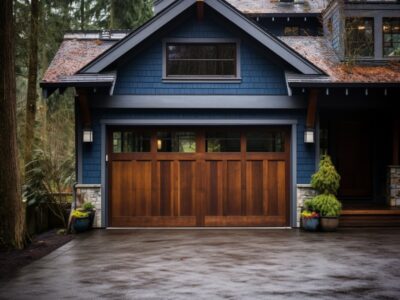
Window Garage Door: Framing Views, Enhancing Aesthetics
Table of Contents1 What Is a Window Garage Door?2 How Does a Window Garage Door Work?3 What Are the Benefits of Having a Window Garage
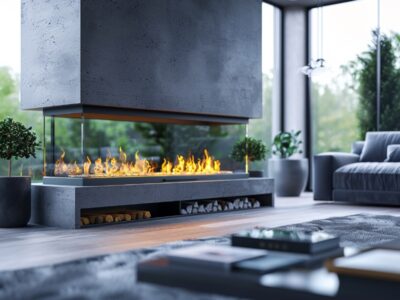
Can I Control My Fireplace With My Phone?
Table of Contents1 What is a Smart Fireplace?2 How to Control Your Fireplace with Your Phone?3 What Features Can You Control with Your Phone?4 What

Glass Door Garage: Elegance With Every View
Table of Contents1 What Is a Glass Door Garage?2 What Are the Benefits of a Glass Door Garage?3 What Are the Different Types of Glass




